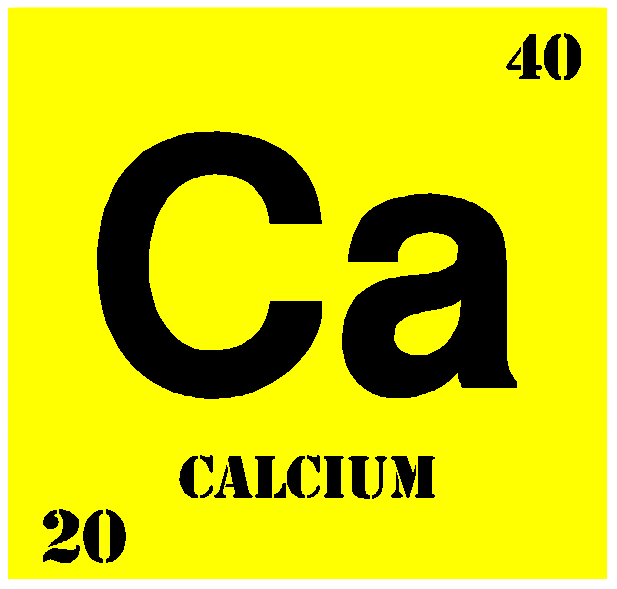Ca

No bones about it ladies. As you enter the early stages of menopause, your bones lose their ability to retain their mass and manufacture new bone tissue, resulting in bone loss and increasing the risk for osteoporosis. In addition to exercise and eating calcium-rich foods, experts recommend calcium supplements to make up for what you might be lacking.
According to the National Osteoporosis Foundation, adults ages 50 and over need about 1200 mg daily, while adults up to age 50 need about 1,000 mg daily. Calcium supplements have been shown to slow bone loss in postmenopausal women but for in some, may also cause bloating and constipation.
Fortunately, new research published in the early online edition of the journal Calcified Tissue International shows that supplements containing 500 mg calcium citrate are absorbed more efficiently than those containing 1000 mg calcium carbonate. What’s more, the lower dose of calcium citrate also causes fewer side effects.
The bottom line is less may be more, except for when it comes to side effects.
For those of you who don’t know the difference between the two forms of calcium, calcium citrate is derived from the citric acid while calcium carbonate comes from the shells of marine organisms, snails and eggs.
Finally, it’s Wednesday! For whatever reason, the calcium symbol reminds me of the following scene from Singing in the Rain. Enjoy!
[youtube=http://youtube.com/watch?v=vH_OKzzZhw8]
Read MoreOh! Dem bones!
Dem bones, dem bones gon-na walk a roun.’ Spiritual, traditional childrens song. Writer: anonymous.

Remember that song from your childhood….the leg bone connected to the knee bone. The knee bone connected to the thigh bone. The thigh bone connected to the back bone…etc etc?
Several studies are starting to emerge as to whether or not long-term use of osteoporosis drugs actually weakens the bones they are supposed to protect. The most vulnerable area? The thighbone, which, in some patients, have snapped during walking or standing.
Most recently, doctors from New York Presbyterian-Weill Cornell and New York’s Hospital for Special Surgery report in the Journal of Orthopedic Trauma that 19 of 20 women who had used the osteoporosis drug Fosamax for at least 6.9 years suffered from this type of fracture. Fortunately, similar fractures have not been observed in association with other drugs of the same class (e.g. Actonel, Boniva).
The New York Times has a great article about this issue worth checking out.
In the interim, last month, I wrote about a Thai herb that might help peri- and post-menopausal women with bone loss. Other important steps include a diet that is rich in calcium and vitamin D, regular weight-bearing exercise, and avoidance of excessive alcohol or caffeine.
You can read also more about osteoporosis and the role of lifestyle changes in prevention at the American College of Rheumatology website.
Read MoreNo Bones About It

Estrogen is important for maintaining bone health, in particular, bone density (or the amount of bone present in the skeleton). Although genetics and environmental factors are important, after age 35, women
(and men) start to lose their bone density at a rate of 0.3% to 0.5% a year. This is a natural part of the aging process. However, as estrogen levels decline through menopause, the rate of bone density loss accelerates. In fact, during the first five years after menopause, women can experience as much as a 30% loss of bone density, leading to osteoporosis. The Menopause Blog has a few good entries on osteoporosis and menopause and I encourage you to visit the site.
Meanwhile, it appears that a plant extract that used been used medicinally in Thailand for over a century may have estrogen-like effects on bone metabolism. (Bone metabolism is a term used to describe the continuous cycle of breakdown (or resorption) and build-up (or deposition) that occurs.) Known as Pueraria mirifica (White Kwao Krua), this plant is rich in isoflavones, or plant-derived compounds with estrogen-like activity.
The study, which appeared in the journal Menopause showed that Peuraria mirafica significantly decreased a bone-specific marker involved in resorption compared to placebo, suggesting that there was less bone resoprtion in women given the active treatment.
Although the researchers caution that firm conclusions cannot be drawn from such a small study group (71 women), they are conclude that preliminary findings are hopeful and show that Peuraria mirifica may have some benefits for menopausal health.
Read More





